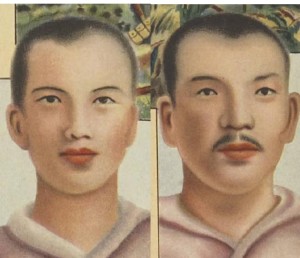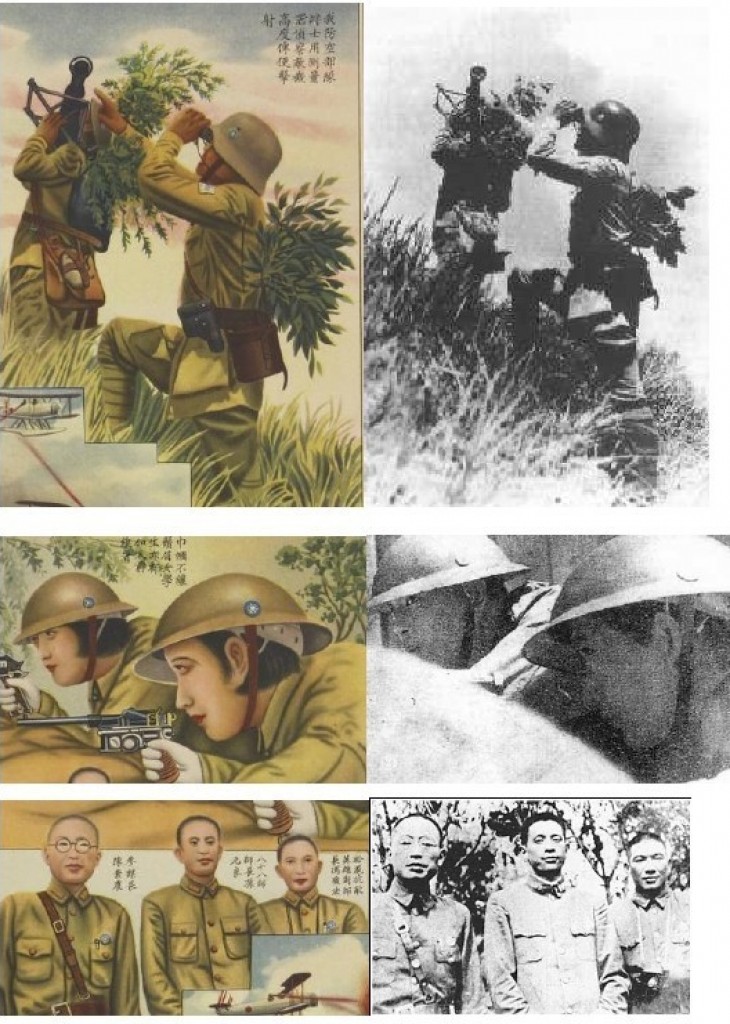More Than A Thousand Characters
- By Peter Harmsen
- 25 July, 2014
- No Comments

With their immediate impact and their appeal to the emotions, images have been used in war propaganda since ancient times. Therefore, it’s no surprise that they were employed in China too during the eight-year struggle against Japan. They were extra useful because China at the time was a society where illiteracy was widespread. (After all, literacy is a much bigger achievement in a culture where you have to learn thousands of characters than in one where it depends on memorizing 20-odd letters.)
The images on this poster all depict famous episodes in the three-month-long Shanghai campaign of the fall of 1937. The central image shows Chinese artillery batteries pounding Japanese naval vessels off the town of Wusong, north of Shanghai. It is true that the Wusong batteries posed a considerable menace to the Japanese invasion force, but their firepower is unlikely to have been anywhere near as ferocious as suggested in this drawing.

The illustration at the start of this post is from one of the central chapters of the Shanghai battle – the struggle for the town of Luodian near the Yangtze river. Both parties considered possession of Luodian absolutely necessary, and the fight was indeed as bloody, or bloodier, than shown in the drawing. However, the historical battle was bloody in a different way. The images gives the impression that Luodian was a 19th-century style encounter between two armies meeting in neat, lawn-like surroundings. In reality, the fighting around Luodian in many cases came to resemble the situation on the Western Front two decades earlier, where the front line often didn’t move for weeks, while soldiers struggled with not just the enemy but also rain and mud in disease-infested trenches.

Somewhat curiously, the portraits of two Japanese POWs are included. Anyone with a passing knowledge of World War II propaganda knows that racial stereotypes florished in poster art, but here they seem entirely absent. If it wasn’t for the caption, it would be impossible to identify the two as Japanese and not Chinese. It’s definitely not an attempt to incite hatred of the enemy. It could be a reflection of the Chinese view that the Japanese leaders, not the common Japanese people, were the enemy. Clearly it was also important simply to be able to show off enemy captives, alive, and claim the moral high ground. It is a sad fact that neither side took very many prisoners during the battle of Shanghai, or later, for that matter.

Several of the images in the poster are copied directly from famous photos of the Shanghai battle. The one in the middle shows two female Chinese soldiers, who have been given fancy hand guns they are not holding in the original photo. The officer in the center of the image at the bottom is Sun Yuanliang, the commander of the elite 88th Infantry Division, which fought in Shanghai from the first to the last day. Sun Yuanliang lived to be 103 years old, dying on Taiwan in 2007.



 Copyright © 2025
Copyright © 2025
Leave a Reply